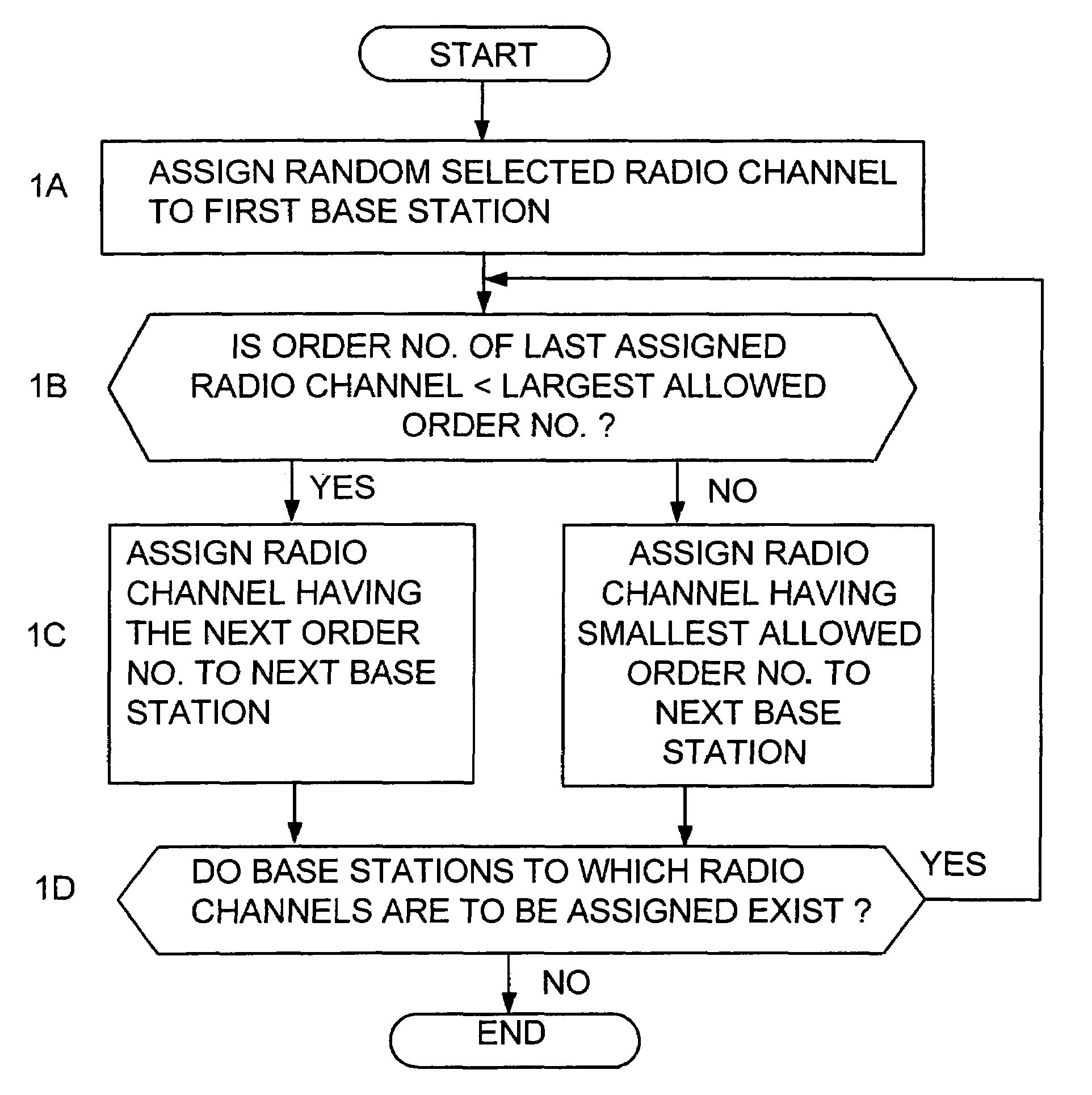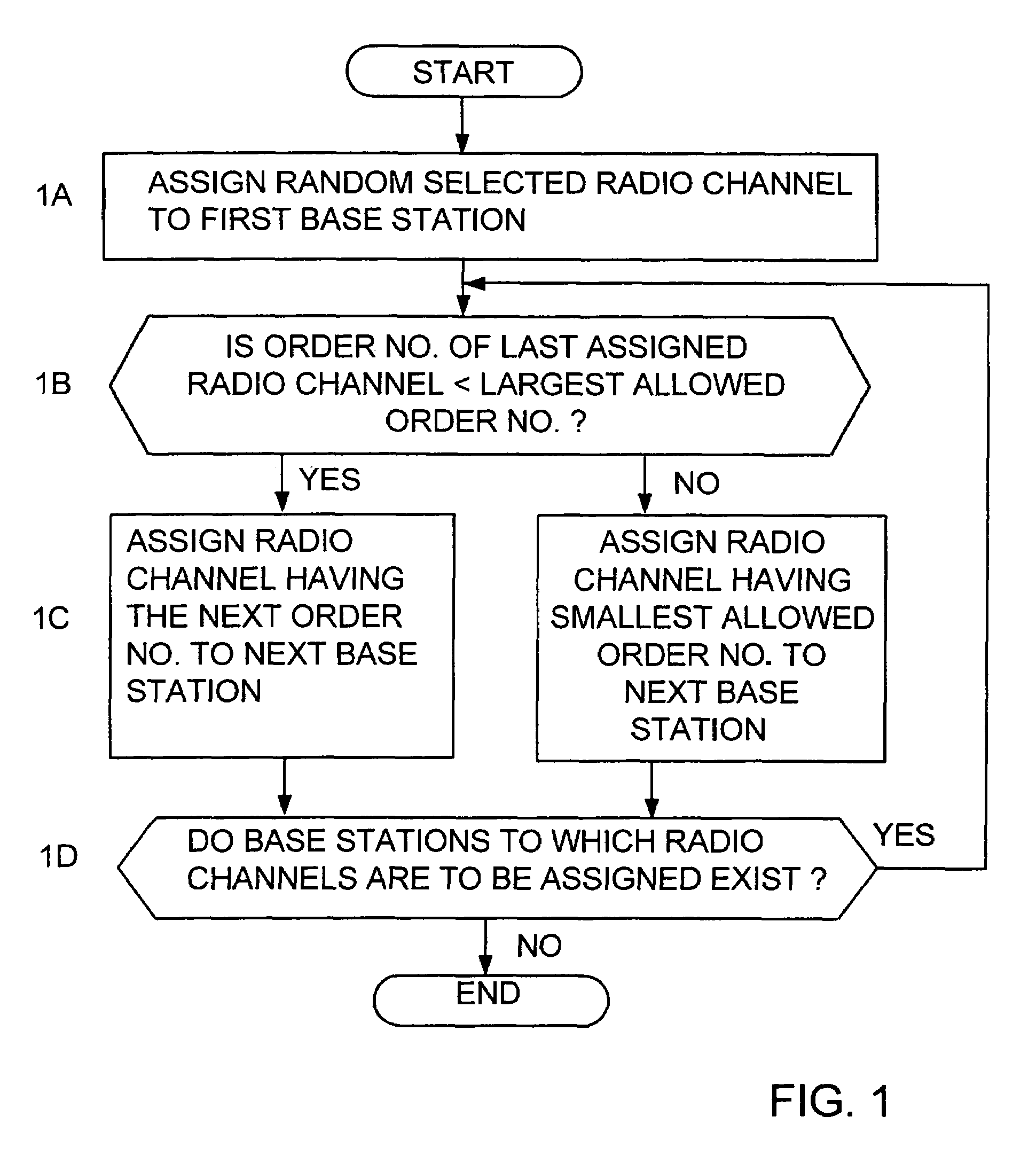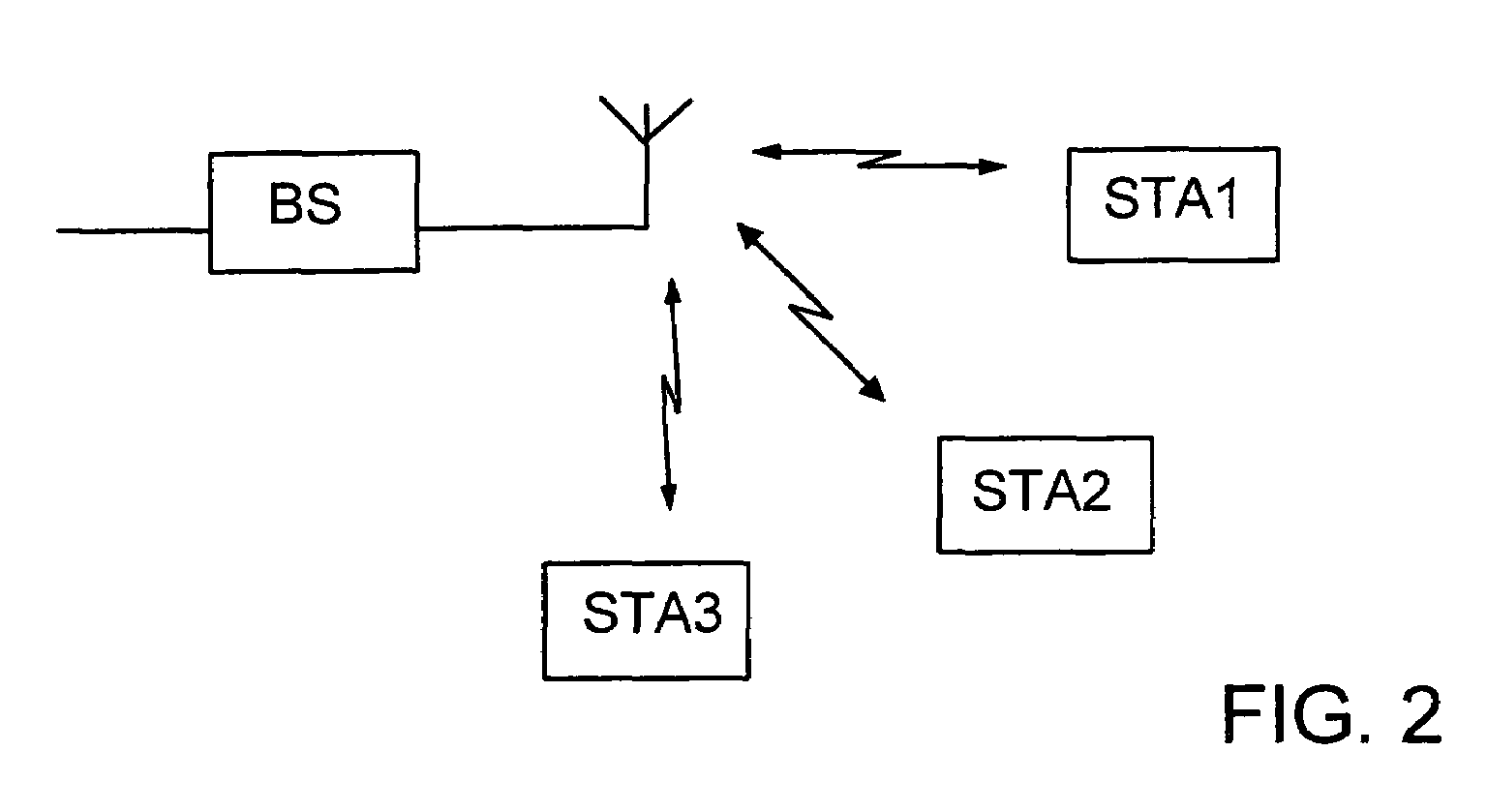Method of assigning radio channels in wireless network
- Summary
- Abstract
- Description
- Claims
- Application Information
AI Technical Summary
Benefits of technology
Problems solved by technology
Method used
Image
Examples
Embodiment Construction
[0015]FIG. 1 is a flow chart of the method of the invention. Let us assume by way of example that a production lot involving base stations for wireless networks delivered to Europe is concerned, the number of available radio channels being 13 and the radio channels being numbered from one to 13. In step 1A, a randomly selected radio channel is assigned to a first base station. In step 1B, a check is made to see if the order number of this base station is smaller than the largest allowed order number, i.e. less than 13. If the order number of the assigned radio channel is less than 13, the next radio channel in order is assigned to the next base station in step 1C. If the order number of the assigned radio channel is not less than the largest allowed order number, i.e. 13, but equal to 13, a radio channel whose order number is the smallest allowed, i.e. in this example one, is assigned to the next base sta-tion in step 1C. This way radio channels are assigned in order until the end o...
PUM
 Login to View More
Login to View More Abstract
Description
Claims
Application Information
 Login to View More
Login to View More - R&D
- Intellectual Property
- Life Sciences
- Materials
- Tech Scout
- Unparalleled Data Quality
- Higher Quality Content
- 60% Fewer Hallucinations
Browse by: Latest US Patents, China's latest patents, Technical Efficacy Thesaurus, Application Domain, Technology Topic, Popular Technical Reports.
© 2025 PatSnap. All rights reserved.Legal|Privacy policy|Modern Slavery Act Transparency Statement|Sitemap|About US| Contact US: help@patsnap.com



